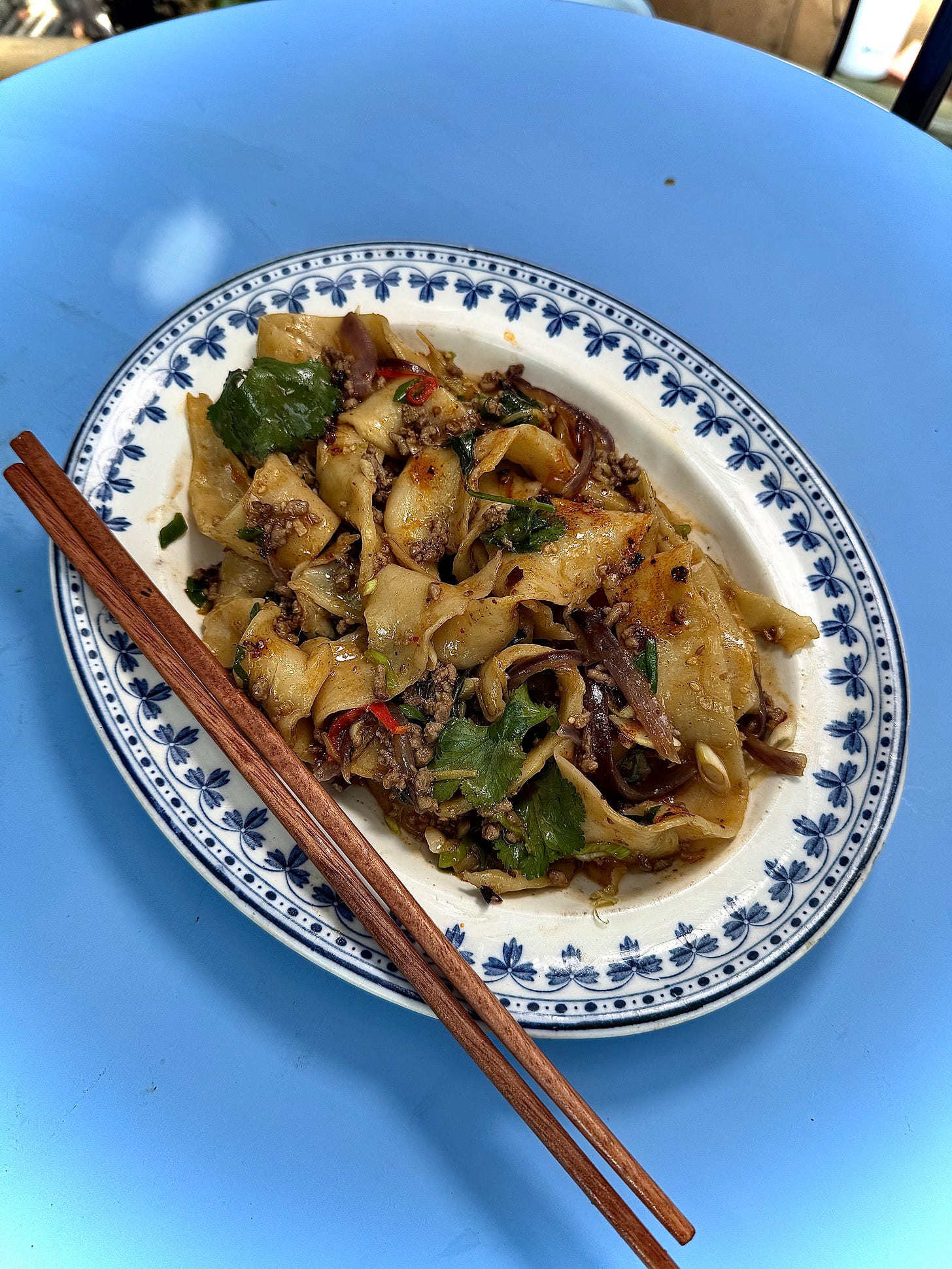Lamb and cumin Belt noodles
Also known as "biang biang" noodles because of the smacking noise you make when you make them, making recipes number 5 in the mince series a real whip snapper of a recipe.
Are you craving something bold and full of flavour? Something familiar, but new? Let me introduce you to these Lamb and cumin belt noodles – the perfect fusion of spice and history.
The noodles are big, chewy and loaded with the rich flavours of Northern China. These noodles have roots in Chinas Xiam and Shanxi provinces, where Muslim communities have been cooking with lamb and cumin for centuries. The combination of lamb and cumin is central to the cuisine and a reflection of the flaviours brought to China by the Hui Muslim population in the region. It’s a dish that carries history and heart to every bite with those warm and comforting spices. They give something between Thai drunken noodles and I’d go as far as to say a real fragrant Ragu Parpadelle.
First you make the noodle dough and then rest, pull and stretch, before cooking. I used to make these all the time, but am out of practice and you can see that it even works well if the noodles are a little messy like mine!
You then fry the lamb mince with the aromatics, spice and sauces and fling in the noodles with the fresh herbs, chilli oil and sesame.
For the biang biang noodles
250g pasta or white bread flour
½ tsp sea salt
125ml cold water
oil
500g lamb mince
For the fry flour mix
1 tbsp coarsely ground cumin seed
1 tsp ground coriander
1/2 tsp chilli flakes
1/4 tsp ground white pepper
1/8 tsp ground Sichuan peppercorns
2 tsp cornflour
The aromatics:
1/2 medium red onion, sliced
4 cloves garlic, thinly sliced
3cm ginger, cut into matchsticks
1 red chilli, thinly sliced
4 spring onions, thinly sliced
large handful of coriander, leaves picked
small handful of mint, leaves picked
3 tbsp toasted sesame seeds
For the stir fry sauce:
4 tbsp soy sauce
2 tbsp rice wine, or sake
2 tbsp rice wine vinegar
1/2 tsp sugar
1/2 tsp MSG
1/4 tsp salt
Chilli oil to serve.
Firstly mix the noodle dough. Stir the salt though the flour and then slowly, (but surely), you need to mix the paste into a dough. Turn it out onto a surface and then knead the dough for about 5 minutes to stimulate the gluten production. Cut the dough into 8 and roll into balls then coat them in oil and let them rest for 30 minutes, covered in film in the fridge.
Next up you need to flatten each dough piece into a rectangle shape with a rolling pin. Roll the dough on an oiled surface as long and flat as it will go. Grab the noodle with both hands and pull it in opposite direction. Leave on the oiled surface and repeat with the rest of the dough.
Bring a large pan of salted water to the boil. And a large bowl with cold water and ice. You need to blanch and refresh the noodles before you start cooking the stir fry. Boil the noodles for about 2 minutes or until they have risen and have cooked, but are still al dente. Drain and then chill them down in the ice water.
TO make the stir fry part of this dish. Transfer the fry mix into a pestle and mortar or spice grinder and grind into a fine powder.
Mix the lamb with the dry ingredients, using your hands to massage it through thoroughly.
Meanwhile, heat the wok until smoking. Add 1 tbsp oil then add the lamb and then break it up and caramelise it, by leaving it for about 1 minute. It should go brown and then start to leak out some water, by which stage stir-fry hard and fast a couple of minutes, just until cooked through and brown.
Add in the onion, garlic, ginger, chilli and fry for a further minute or two. Now pour in your stir fry sauce, followed by the cooked noodles and spring onions. Keep stirring to make sure everything is well coated and combined. Finally mix through the herbs, toasted sesame and a tentative teaspoon of the chilli oil. Serve immediately.





